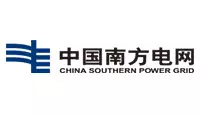
Safety Helmet 2024 Executive Standard
As a type of personal protective equipment (PPE) specifically designed to protect the head, the safety helmet plays a vital role in the modern workplace. With the development of science and technology and the change of industry demand, the executive standard of safety helmet is also constantly upgrading and adjusting. 2024 executive standard of safety helmet has been comprehensively optimised and improved on the basis of the original, aiming at better adapting to the technological advancement and the use of new materials, and at the same time, meeting the industry's dual requirements of safety performance and use comfort.
I. Basic structure of safety helmetThe helmet mainly consists of three parts: shell, liner and adjustable band. The shell is responsible for resisting external impacts, which is the first line of defence of the helmet; the liner absorbs impacts and reduces head injuries; and the adjustment band ensures the fixation and comfort of the helmet so that the wearer can keep wearing it stably in various environments.
2. the main changes in the implementation standard of safety helmet in 2024Higher impact resistance: The new standard emphasises that helmets must have higher impact resistance. Specifically, when the helmet is subjected to a certain mass of objects falling from a specified height, the liner must effectively avoid hitting the wearer's head with a force exceeding the limit. By changing the design and material of the cap shell, the impact resistance of the helmet has been significantly improved.
Requirements for electrical insulation: For working environments in high-risk industries, such as power and construction, the new standard adds requirements for electrical insulation. Helmets must undergo a series of electrical tests to ensure that they do not leak at a certain voltage, thus protecting the wearer.
Comfort and adjustability: The new standard stipulates that the lining material of the helmet should have good breathability and softness to improve wearing comfort. At the same time, the helmet should have an adjustable design to adapt to wearers with different head shapes and head circumferences to ensure stability in various environments.
Environmental Protection Requirements: Inheriting the original standard, the 2024 safety helmet standard emphasises environmental protection requirements. The production materials of safety helmets should comply with national environmental protection standards, and no toxic and harmful substances should be used in the production process to reduce the impact on the environment.
3. the characteristics of safety helmets in different industriesConstruction industry: Safety helmets in the construction industry are usually characterised by their high impact resistance and strong durability. Safety helmets in this industry need to ensure that they can maintain good performance in a variety of weather conditions and prevent injuries caused by falling objects.
Power industry: the power industry helmet in addition to the regular impact resistance, but also need to have excellent electrical insulation properties to ensure the safety of staff in a high-voltage environment.
4. the purchase of helmets and the use of precautionsChoose the helmet that meets the standard: make sure to choose the helmet that meets the 2024 implementation standard, and pay attention to the quality certificate and test report of the product. There are some low-quality products on the market that may not provide effective protection at critical moments.
Choose according to individual head circumference: Safety helmets should be chosen according to an individual's head circumference to ensure that they do not slide or cause compression when worn. An ill-fitting helmet is not only ineffective, but may also lead to accidents.
Regular Inspection and Replacement: Safety helmets have a service life, and the wearer should regularly inspect the helmet and replace it in time if there is obvious damage, cracks or aging on the surface.
Correct wearing: When wearing the helmet, the wearer should adjust the elasticity of the liner to ensure that the helmet fits the head, and avoid leaving gaps in the shell so as not to affect its protective effect.
The implementation of the 2024 safety helmet standard not only reflects the advancement of technology, but also attaches great importance to the safety of users' lives. By following and promoting safety standards, we can better protect people's lives and create a safer working environment for society. Everyone should recognise the importance of safety helmets, wear qualified protective equipment consciously in daily work, and enhance self-protection awareness.












